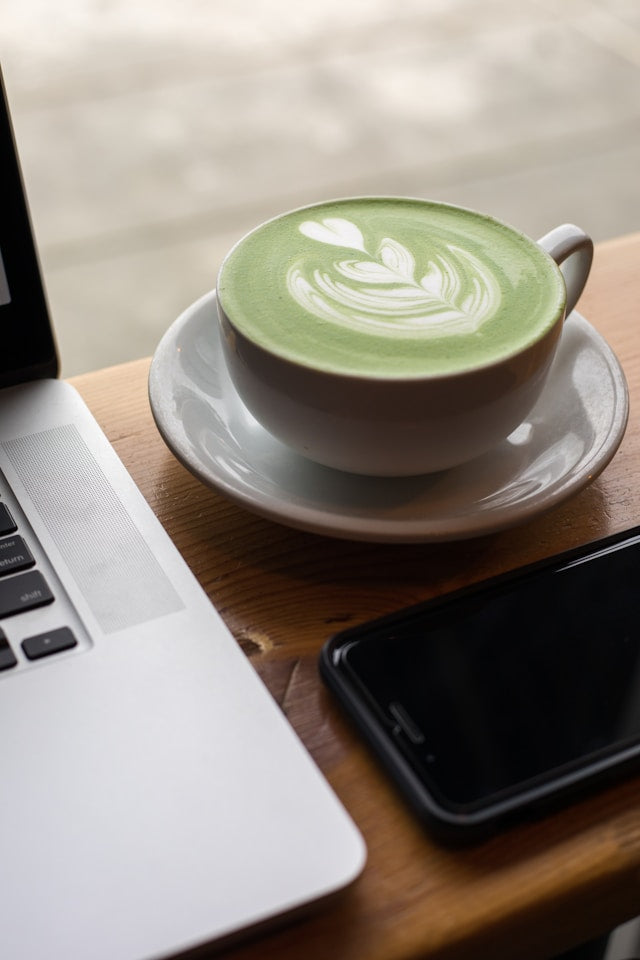Ever wondered how to make matcha taste just as good as your local shop, but in the comfort of your own home?
This guide is the perfect way to elevate your morning (or afternoon or evening, we're not judging when you need caffeine) matcha experience at home!
HOW MUCH CAFFEINE IS REALLY IN MATCHA?
Matcha has a decent caffeine kick, but it’s a bit different from what you’d get in a cup of coffee. On average, a standard serving (about 1–2 grams, or roughly 1/2 teaspoon) of ceremonial matcha has around 30–70 mg of caffeine, which is roughly comparable to a shot of espresso or half a cup of coffee. At JJ's we serve 1 teaspoon of matcha with 40 grams of water at 170°F, equaling about 68 mg of caffeine.
The difference is how the caffeine in matcha is absorbed more gradually. That’s because matcha also contains a high amount of an amino acid called L-theanine, which promotes relaxation and helps to balance out the stimulating effects of caffeine. Instead of the quick jolt and crash that coffee sometimes gives, matcha’s caffeine provides a calmer, more sustained energy boost. This makes it popular for people looking for focused energy without the coffee jitters.
Whether you're looking for a pre-workout boost, a morning focus, or just a way to relax while staying alert, matcha is the choice for you!
WHY CEREMONIAL GRADE?
Ceremonial matcha is one of those little luxuries that can completely elevate your tea experience at home. This grade of matcha has a smooth, naturally sweet, and complex flavor that’s perfect for drinking on its own and for lattes. If you’re after that classic, rich matcha taste, ceremonial grade is where it’s at. The difference is huge – with ceremonial matcha, you get this amazing umami flavor, a vibrant green color, and none of the bitterness.
WHAT DO I NEED TO MAKE MATCHA AT HOME?
Making matcha at home doesn’t need to be complicated, but having the right tools makes a big difference.
You’ll want:
- a matcha bowl to whisk in
- a bamboo whisk to froth up the tea – the whisk might seem extra, but it really helps create that creamy, smooth texture)
- a fine strainer before you whisk will remove clumps and make the tea super smooth
- water heated to about 170°F – too hot, and the tea can turn bitter & if you’re into precision, a scale helps you get the perfect measurements of matcha
With a little bit of practice, you can turn matcha-making into a calming ritual that brings out the best in this special tea – each time tasting like love at first sip.
Photo by Jason Leung on Unsplash

